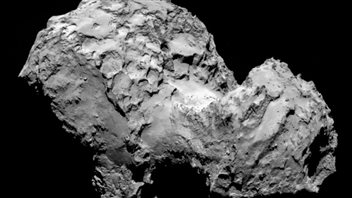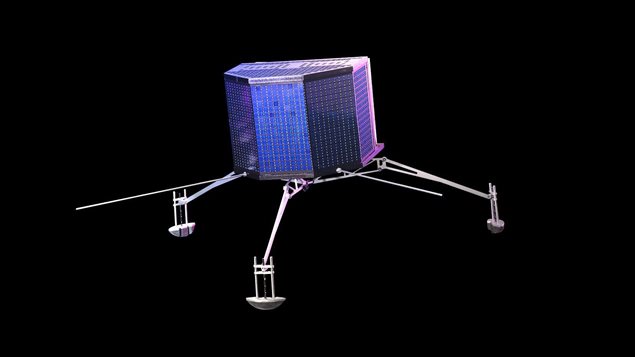It will be a tricky manoeuvre and a first, but European Space Agency scientists will try to land a probe on a a 4-km long comet zooming through space at 55,000 km/h on November 11. After studying the potato-shaped comet they have chosen a spot that looks relatively safe and close to interesting features. The lander called Philae will be launched from the unmanned Rosetta probe now flying alongside the Churyumov-Gerasimenko comet, called 67P for short.
Harpoons and ice screws will aid landing
Landing will not be easy since the comet has a rocky irregular surface and almost no gravity. “They’re going to accomplish that with harpoons and…ice screws,” says Paul Delaney, a professor of physics and astronomy at York University in Toronto. “That’s the plan, to try and anchor itself onto the surface of the comet so that any surface activity does not blow it clear as the comet approaches the sun.”

This comet orbits the sun every 6.5 years and, as it gets closer, it begins to spew fragments and gases. If all goes according to plan, Philae will capture some of that material. It will also drill down for some surface material, analyse the samples and send the information to Rosetta some 30 km away, which will relay it back to scientists on earth. That should reveal a wealth of information about our solar system.
Clues to the formation of planets and life
“Comets are leftover fragments from the earliest moments of the solar system. Literally, they are four-and-a-half billion years old,” says Delaney. “We’re trying to understand how the solar system has evolved…how the planets formed, how life on earth formed, how the debris that exists in our solar system plays into the development of planets.”

Understanding ‘our place in space’
Comets and meteors have a tendency to slam into planets and there have been several such events and extinctions over the past 4 billion years. “All of this stuff is interconnected,” says Delaney. “So trying to get a complete picture of the way the solar system has evolved, the way life has evolved the threats that are posed by meteors, minor planets, asteroids, as well as comets, all this plays into a more complete understanding of our own place in space.”
It can also shed light on the existence of other planets and the possibility of life elsewhere in the galaxy.
If Philae lands successfully in November it could send information back to earth for as many as eight months.







For reasons beyond our control, and for an undetermined period of time, our comment section is now closed. However, our social networks remain open to your contributions.